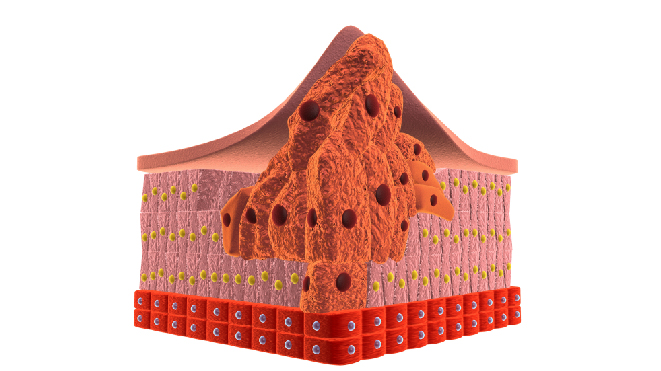Skin cancer can develop in any part of the body, but most often it is developed on skin that is more exposed to the UV radiation. Skin cancer occurs to people of all skin tones. Read more about skin cancer here. Surgery is the most common and preferred treatment option for skin cancers. The tumour or cancer containing area of the skin is removed along with some amount of surrounding tissue. The exact procedure depends on the type of surgery done.
Types of surgeries used to treat skin cancer:
The following are the different types of surgeries available to treat skin cancers, the exact type is chosen based on the requirement of the patient and the location of the cancer.
Mohs surgery:
The Mohs procedure involves removing a very thin layer of the skin along with the tumour and checking the layer for the presence of cancer under a microscope. If it has cancer, another layer is removed and is checked again. The process is repeated till the sample is few of cancer. It is a time taking procedure but saves more skin near the tumour when compared to the other surgeries, it also looks better after the surgery and has better outcome too.
Excision:
Excision involves cutting or shaving off the cancerous growth with a scalpel or a sharp razor and local anesthesia is given to numb the affected area. There are three main types of excisions:
- A simple excision where a small area and a small perimeter of the surrounding tissue is removed.
- A shave excision involves shaving or peeling of the surface of the skin using a sharp razor like tool.
- A wide excision involves removing the tumour and a wide area of healthy tissue surrounding it. It is usually the preferred surgery for melanomas and merkel cell carcinomas.
Curettage and electrodessication:
A curette is a long, thin surgical tool with a hoop or a scoop at one end that is used for scraping the skin. In this procedure, the skin lesion is removed with a curette and the area is treated with electric current to kill the remaining cancer cells and to reduce the bleeding, the latter process is called electrodessication. The procedure may be need repeatedly to completely remove the cancer and requires local anesthetics and can also leave a scar.
Cryosurgery:
Cryosurgery or cryotherapy uses liquid nitrogen to freeze and destroy the cancer cells. It is used only for skin cancers that are confined to small areas or to treat precancerous lesions. The treated area may swell, blister or even scar and the technique may be needed to be performed repeatedly.
Laser surgery:
Laser surgery can be used to treat skin cancers that are very superficial. This method involves using an intense narrow beam of laser light to destroy cancer cells.
Lymph node evaluation and removal:
Lymph node evaluation is done to see if the nearby lymph nodes are affected by cancer and if they are, they are removed surgically to prevent metastasizing of cancer. If cancer is present in one or more lymph nodes, the remaining lymph nodes in the area may be removed too.
Side effects of skin cancer surgery:
The side effects after the surgery for skin cancer depend on the type of surgery and how extensive it was. Minimally invasive surgeries have lesser or less intense side effects. The side effects that appear also differ from patient to patient, they can appear immediately after the surgery or after a few weeks. Most of the side effects can be treated or go away with time but a few may last a long time or can be permanent. The following are the common side effects of skin cancer surgeries:
- Pain at the site of surgery
- Scarring
- Bruising
- Changes in the colour of the skin
- Infection at the site of surgery
- Numbness
- Poor healing of the wound
- Disfiguration of the skin
- Fatigue
- Nerve damage
- Swelling
- Lymphedema (in case of lymph node dissection)
Post care:
A few precautions and some care is to be taken post surgery to ensure smooth and easy recovery.
- Pain management: The patient may experience some pain after surgery and pain control depends on the type of surgery. Pain medication is prescribed as tablets, injections or intravenously.
- Nausea and vomiting: Antiemetic or anti sickness medicines may be prescribed to ease the patient immediately after surgery.
- Wound care: The wound is closed using clips and stitches that are designed to dissolve after healing, antibiotics may be given to prevent infections.
- Scars: The site of infection may feel itchy or bumpy but this will gradually fade over time.
- Wound infection, bleeding of the wound, chest infection and developing clots are the most common complications after surgery for skin cancer and the patients are monitored for the same. In case any of complications arise, the doctors are to be notified immediately.
Read more about aftercare and follow up of surgery for skin cancer here.




